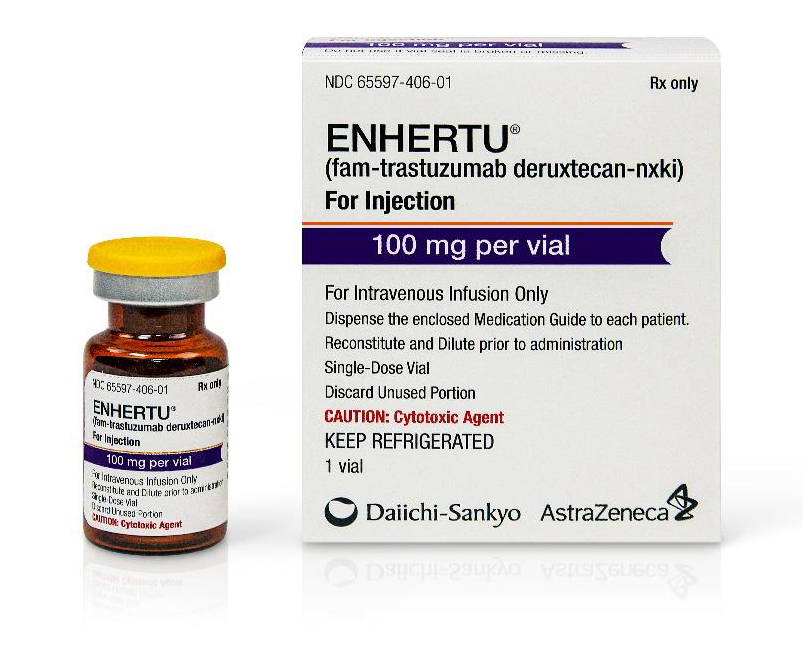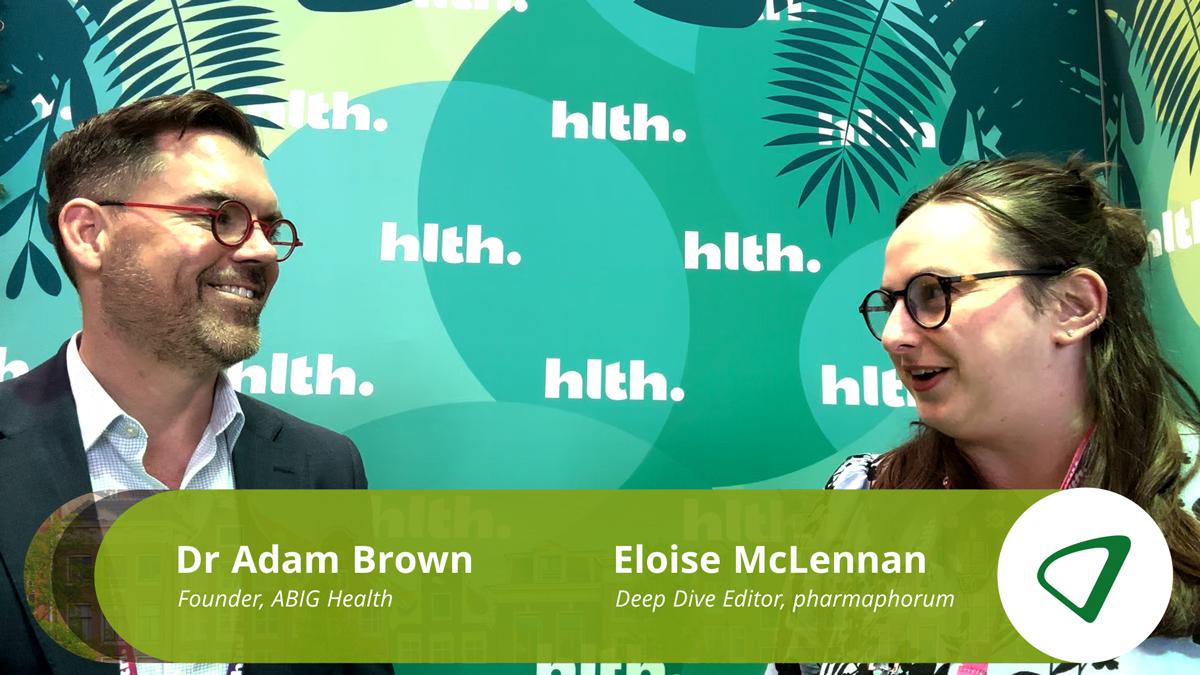Antibody-drug conjugates on the march

One of AstraZeneca’s most decisive moves last year came in March, when it signed a multi-billion dollar deal with Japan’s Daiichi Sankyo, focused on just one breast cancer drug. But with the drug, Enhertu, now approved in the US, doctors could have a powerful new medicine in their arsenal against breast cancer. Richard Staines spoke with Gilles Gallant, Daiichi’s oncology R&D team leader about the future plans for the drug, and the antibody-drug conjugate technology behind it.
When AZ was penning its deal with Daiichi, CEO Pascal Soriot was so convinced in the potential of the drug, codenamed DS-8201 at the time, that he asked investors to fund the deal with a share offer worth around $3.5 billion.
DS-8201 is a buffed version of Roche’s breast cancer drug Herceptin (trastuzumab), which adds the lethal cancer-killing payload deruxtecan to the HER2-targeting antibody’s structure using a special “linker” molecule.
This only breaks once the antibody binds to HER2 found on cancer cells, administering the dose of deruxtecan inside the cell, which dies as a result.
Roche has already used this kind of antibody-drug conjugate (ADC) technology to produce its Kadcyla (trastuzumab emtansine), but with this new ADC, branded as Enhertu, AZ and Daiichi are targeting patients who have failed to respond to two HER2-targeting therapies.
This would set it up for use after Herceptin or Roche’s other breast cancer drug Perjeta, and after treatment with Kadcyla.
At the moment US approval is only conditionally approved based on response rates seen in a phase 2 trial, with survival data coming from the larger ongoing DESTINY-Breast 02 trial.
But the 60.3% response rate seen in the phase 2 Destiny-Breast 01 trial is impressive in patients with such advanced disease.
The companies think it could also outperform Kadcyla and is being tested in the DESTINY-Breast03 trial, a head-to-head comparison with Roche’s rival ADC.
But Daiichi’s oncology team leader Gilles Gallant said there is much more to come from Enhertu, which could be used in earlier stages of the disease, and in other cancers expressing HER2.
The drug could have a wider remit than Herceptin thanks to the power of the deruxtecan component, which is enough to produce a cancer-killing effect even in tumours that barely express HER2.
While Herceptin on its own may bind to ‘HER2 low’ tumours with little effect, Enhertu’s payload is strong enough to kill cancer cells even at very low doses.
“It can bind to HER2 low tumour cells and deliver the payload, and has a different mechanism of action,” he explained.
“When we talk about having HER2-low it does not mean that they have not got the HER2 receptor. It just means that they have less, much less. Other drugs in the past that were HER2-directed tried to be active in those particular patients.”
A place in the world for ADCs
Going forward, Gallant said that that ADC technology is going to be one of several innovations that will help improve the prognosis in a range of cancers.
He sees it as a separate area of research in oncology, after the recent success in areas such as immunotherapy.
ADC drugs like Enhertu could be used as either a monotherapy, or in combination with other forms of cancer therapies.
The first approved ADC was Pfizer’s Mylotarg (gemtuzumab ozagimicin), which the FDA backed as long ago as 2000 in AML.
Mylotarg was initially a commercial flop and was withdrawn in 2010 because of safety issues in a trial that was supposed to confirm its benefit-risk profile after a tentative approval based on early data.
But it was reapproved in 2017 after a campaign by oncologists who wanted to see another treatment option for CD-33 positive patients.
Seattle Genetics and Astellas’ Adcetris (brentuximab vedotin) was the second ADC to be approved for certain forms of lymphoma, followed by Roche’s Herceptin-based ADC, Kadcyla.
The FDA late last year okayed another Seattle/Astellas ADC, Padcev (enfortumab vedotin) in bladder cancer, which was a star of last year’s American Society of Clinical Oncology (ASCO) conference.
Gallant said: “To me it’s a different arm, a different part of what we have available to go after cancer. Of course you will have to combine it. Some of the successes we have had in the past were with combinations.
“You have to consider we have passed the era of immunotherapy – cell therapy is here with CAR-T treatments. They ALL work with different mechanisms of action and I think ultimately we will need to find ways to combine all of these to either prolong progression-free survival or better overall survival.
“This is the first that has been approved but we have six others with similar technology, three of those are already in the clinic and three more are coming to the clinic in the next year or two.”
Pipeline and Seattle issues
A glance at Daiichi’s pipeline underlines the importance of ADCs to the company. Aside from breast cancer Enhertu is also in the clinic in gastric, colorectal, breast and lung cancer uses.
Three other ADCs are in early stage trials for HER3 expressing breast cancer EGFR-mutated non-small cell lung cancer (NSCLC), NSCLC, and solid tumours.
It’s early days for these and there are many hurdles to overcome, particularly as safety issues have cropped up with ADCs in the past.
Enhertu was approved with a warning about risk of interstitial lung disease, and the safety issues with Mylotarg are well documented.
There is also another threat to Daiichi in the form of a legal feud with Seattle Genetics, which specialises in ADCs and worked with Daiichi in this area in an R&D tie-up between 2008 and 2015.
Seattle argues that the linker technology used in Enhertu derives from that partnership, something that Daiichi is contesting in court.
Gallant argues that Enhertu uses a completely different linker from that seen in the tie-up with Seattle, which was based around a different antibody targeting DR5.
“The linker in the payload are completely different. It is important to understand that these are significantly different.”
The target, payload and linker all differ from the one seen in according to Gallant, who is says Seattle’s claim is “without merit”.
Legal issues aside, great things are expected of Enhertu, with peak sales predicted to be north of $4 billion annually, with some analysts suggesting a peak of around $7 billion.
After a slow start 20 years ago with Mylotarg, it seems like ADCs could finally be coming of age.













